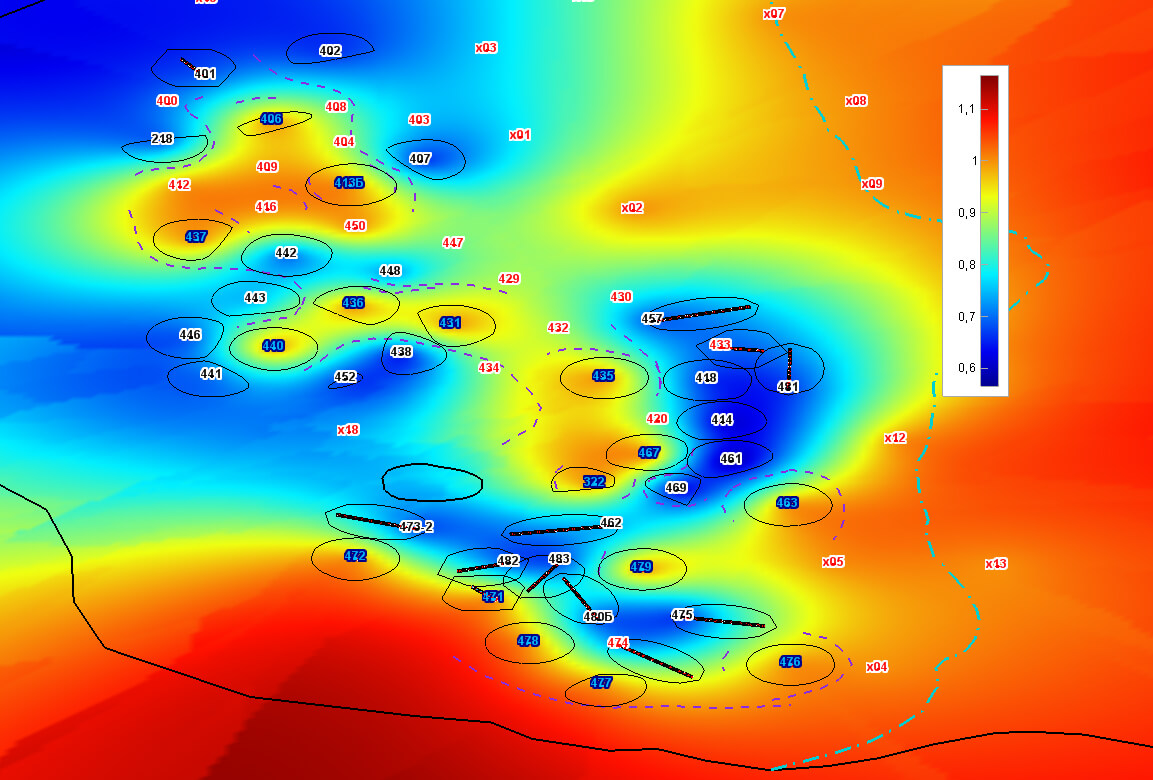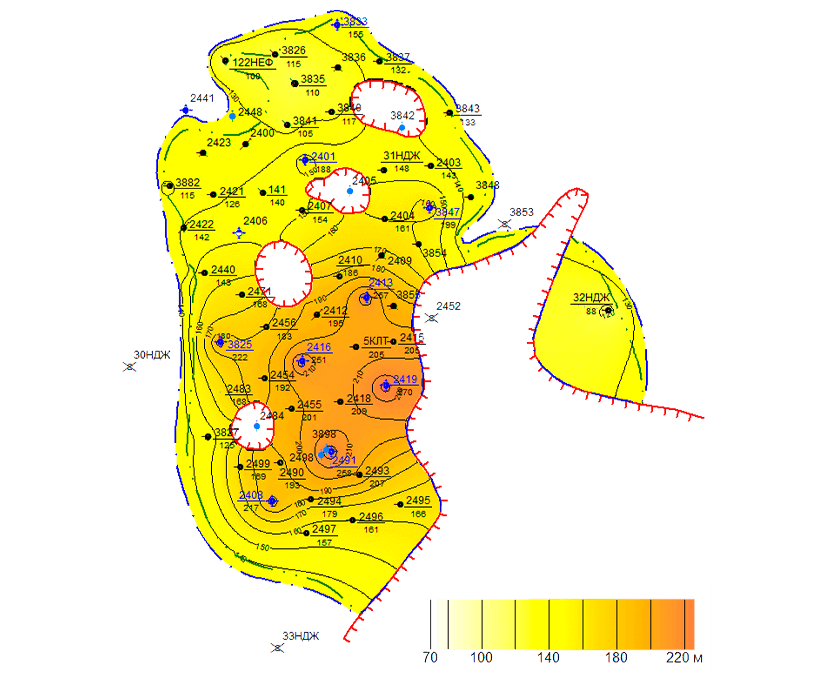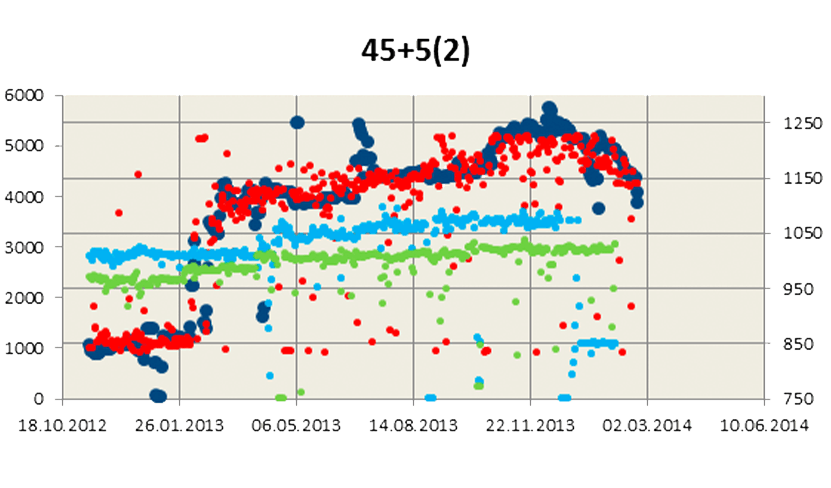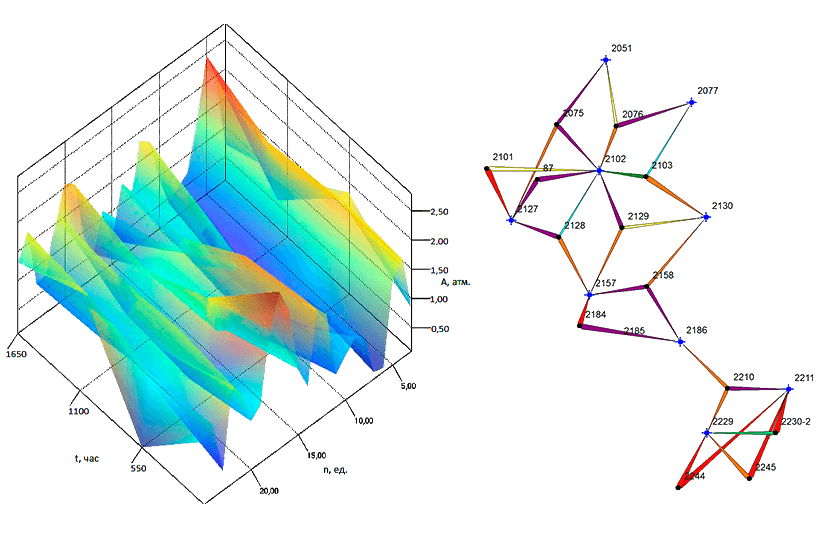

Сontact us: gdis@integra.ru
Complex analytics implies special services including pressure transient analysis, interference analysis and isobar mapping.
The result of the work is detailed maps with the analysis of object energy state time history and reports with thoroughly processed initial data.
Such reports allow making strategic decisions about development of an object under study and meticulous planning of further activities.

Material balance method based on using material-balance equation for pressure calculation in non tested wells.
Conventional method based on various interpolation forms of limited number of measurements.
For isobar mapping the following results of pressure measurements are used: indirect calculation of statistic levels detection with wellhead echometers, direct single measurement of bottomhole pressure, reservoir pressure according to the long-term well testing results.
SIAM Company has considerable experience of isobar mapping for a lot of subsoil users including OJSC Tomskgazprom VNK, OJSC Orenburgneft, LLC RN-Yuganskneftegaz, LLC RN-Stavropolneftegaz, OJSC Samaraneftegaz and others.
Mapping is done mostly using «RN-KIN» software based on a compatible field database of clients.

Complex analysis of PTA is a tool which allows generalizing data obtained on the results of PTA, checking its accuracy and consistency, weighing negative impacts, making recommendations and programming well testing. Besides that, individual tasks may be fulfilled depending on development target features and project aims.

If you have any question connected with SIAM Company,
leave your email address and we will contact you